
Archiving Ice: Newfoundland
Caroline Landau and her team made molds of pieces of ice directly from nature and then transformed them into glass. From moldmaking to glassblowing, they preserved the details of the melting ice and archive its textures into glass.
In 2019, Oliver Rye and Landau drove from the east coast of the US to Newfoundland, Canada. They brought moldmaking equipment, ready to take impressions of the ice. From April through June, icebergs travel from Greenland through the "Iceberg Alley" to the shores of Newfoundland.
At Drakes Cove in Newfoundland, they found a piece of ice that had broken off a nearby iceberg. Landau painted hot moldmaking wax on the ice to capture impressions of its texture.
After making molds in Newfoundland, Landau brought the wax negative to San Francisco, CA. She poured plaster in the wax negative to make the plaster positive. Then, she made silicone molds, wax positives, and plaster-silica molds to blow glass into and replicate the ice into glass.
With the help of 10 others, Landau was able to blow a large amount of glass into the plaster-silica mold. Because the mold was so heavy, they used a forklift to remove it from the kiln, where it had been preheating for 24 hours. After Landau blew glass into the mold, they placed the mold and the glass back in the kiln to anneal for 24 hours.




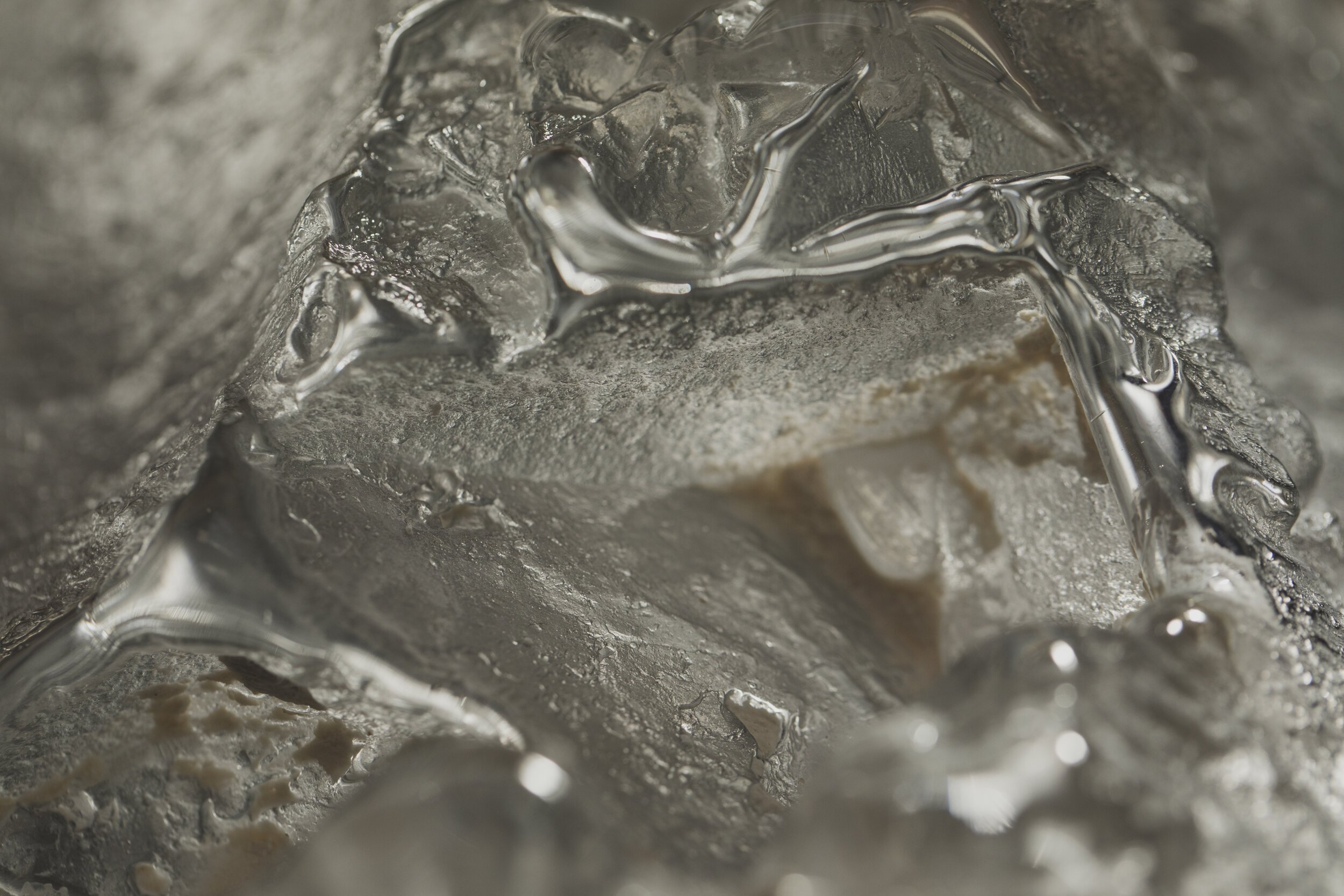





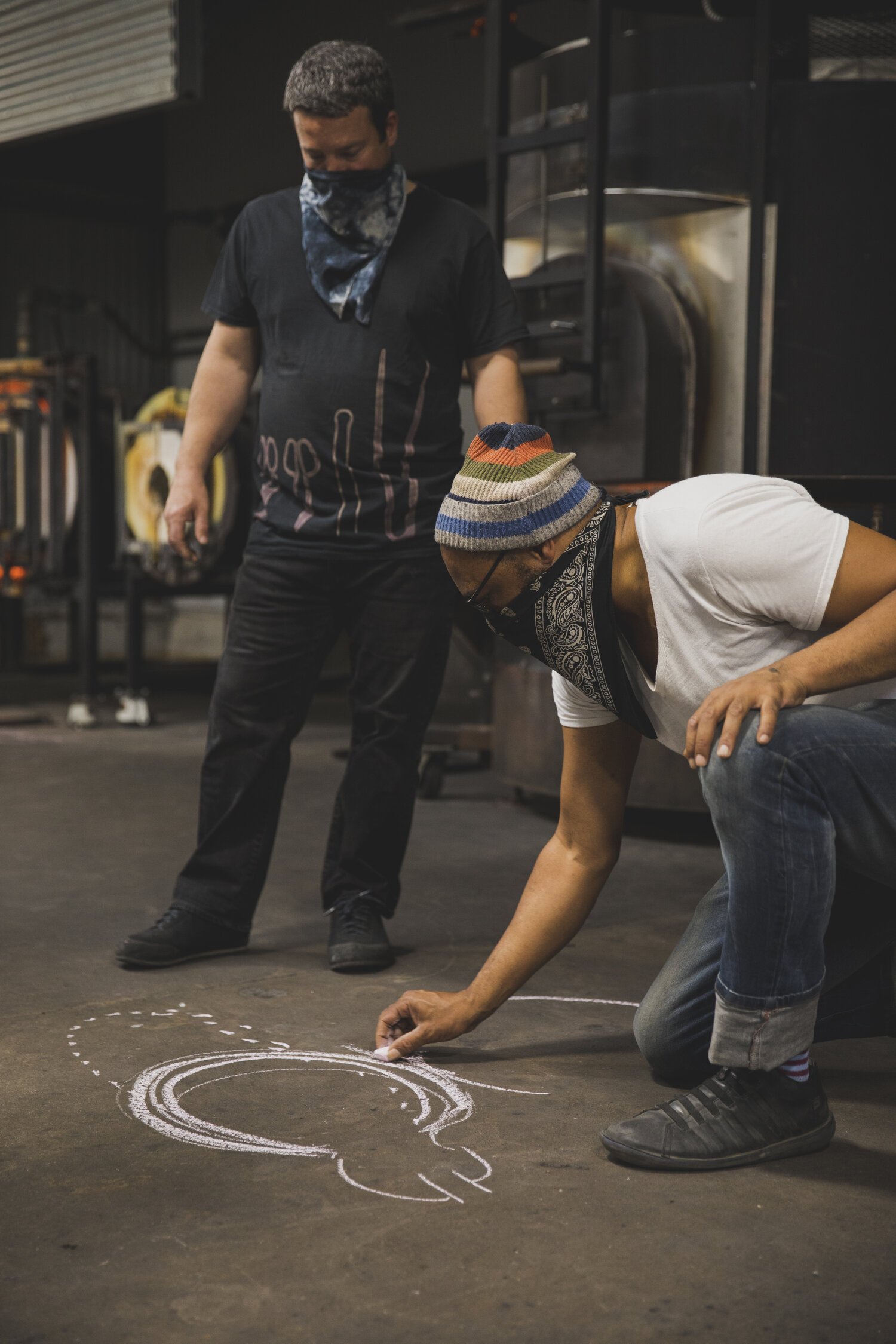
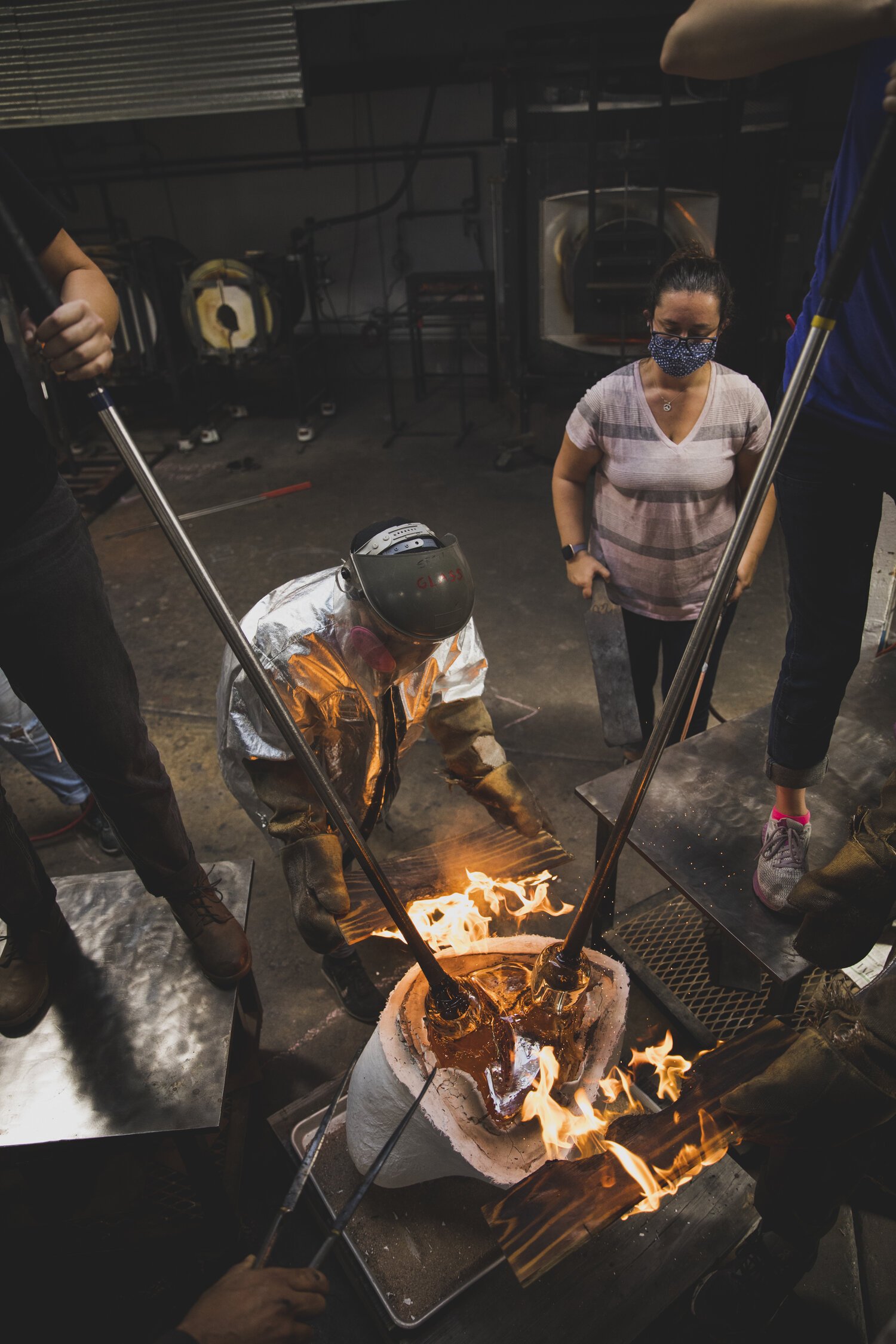

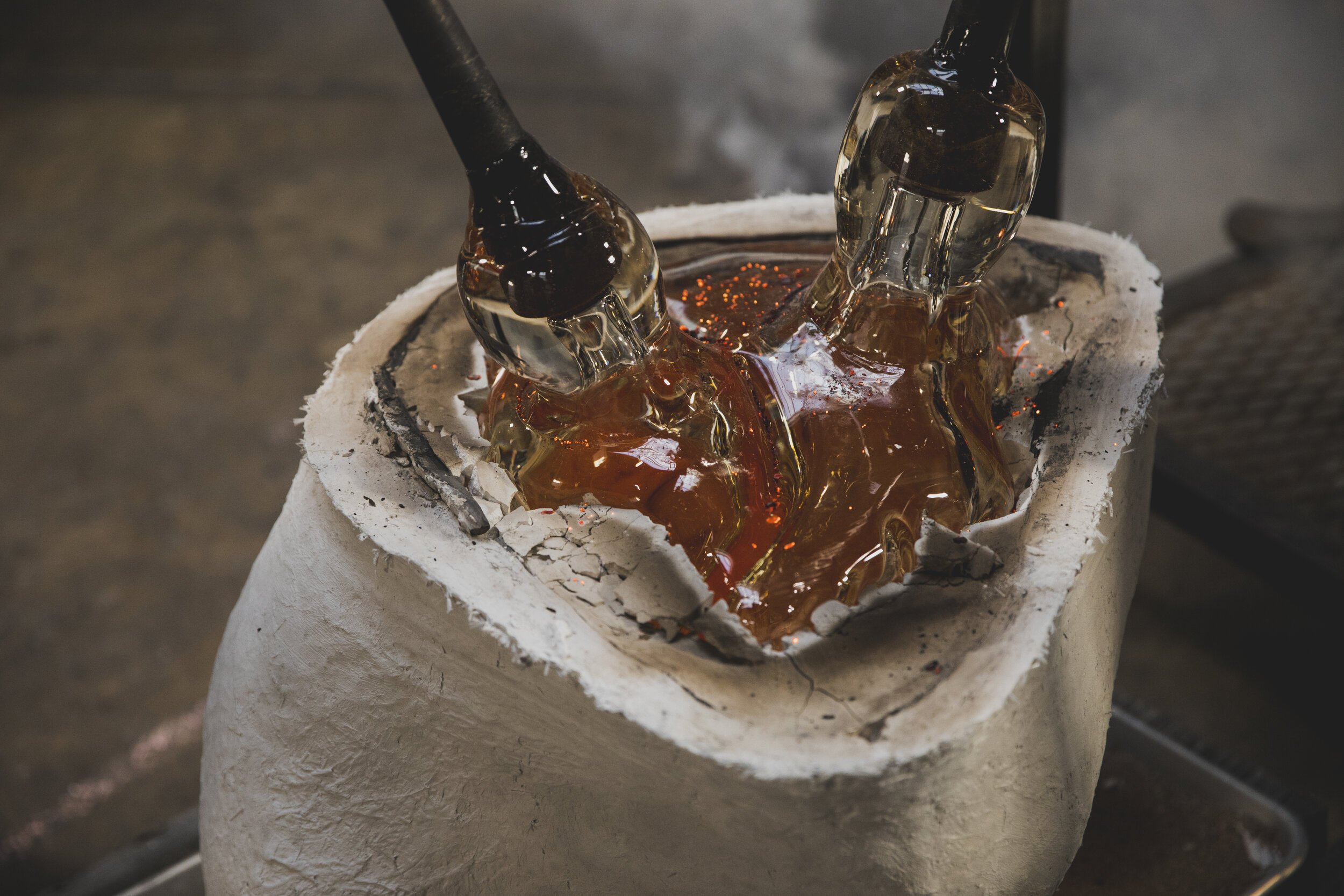

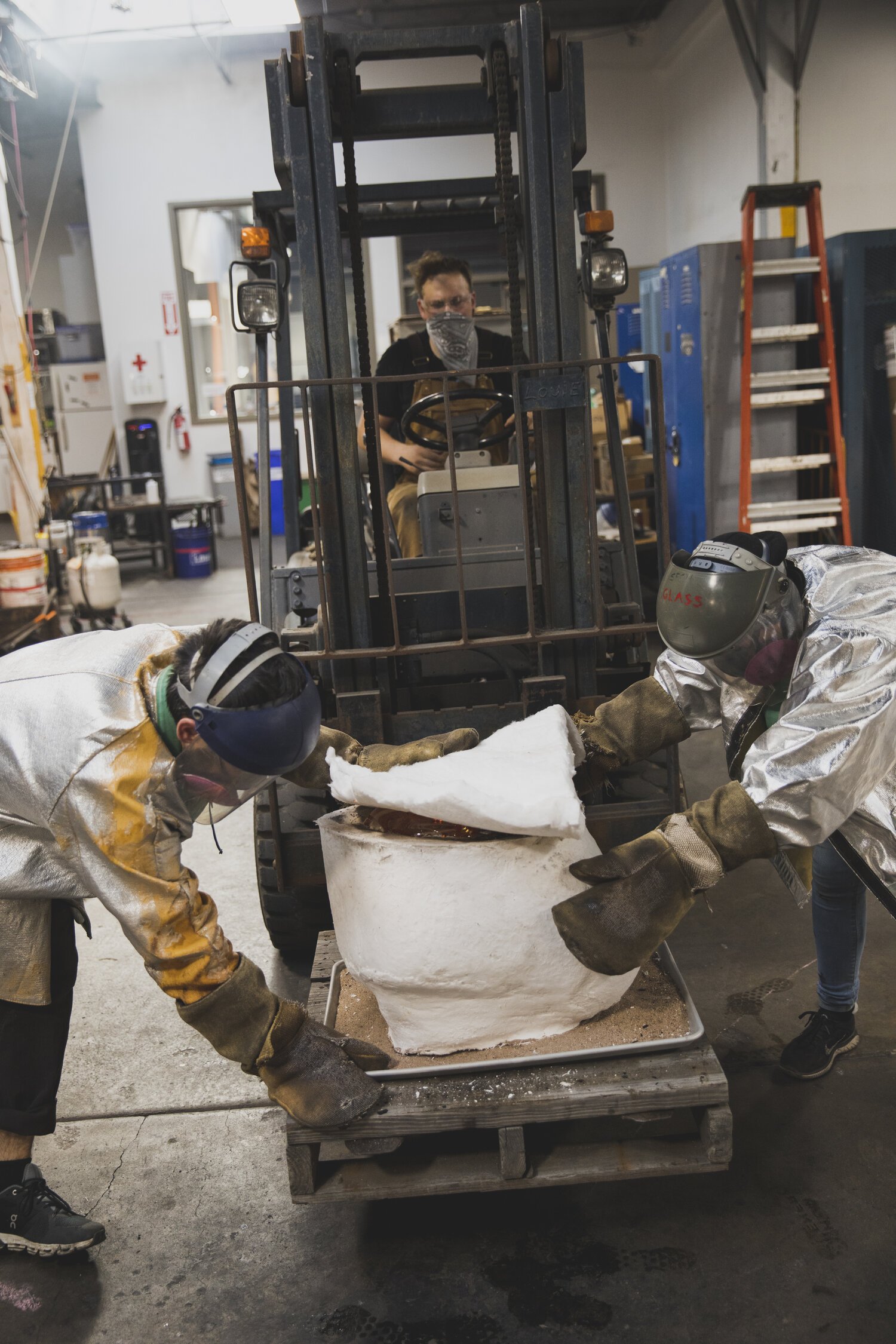

Archiving Ice: Newfoundland was shown at Glass Meet the Future Film Festival with Northland Creative (2021), the Fired Up exhibition at the Wadsworth Museum (2022), and Corning’s New Glass Review 43 publication (2023).